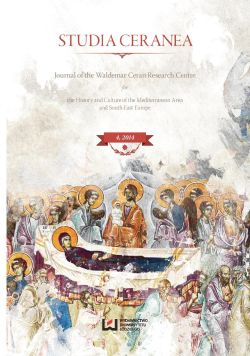Cured Meats in Ancient and Byzantine Sources: Ham, Bacon and Tuccetum
Cured Meats in Ancient and Byzantine Sources: Ham, Bacon and Tuccetum
Author(s): Zofia Rzeźnicka, Maciej Kokoszko, Krzysztof JagusiakSubject(s): Cultural history, Ancient World, 6th to 12th Centuries
Published by: Wydawnictwo Uniwersytetu Łódzkiego
Keywords: cured meats in Antiquity and Byzantium; meat in ancient and Byzantine diet; Ancient diet; Ancient medicine; Byzantine diet; Byzantine medicine; meat in ancient and Byzantine medicine
Summary/Abstract: The present study discusses the role of salt-cured meat in dietetics, medicine and gastronomy demonstrated mainly in ancient and Byzantine medical (Galen, Oribasius, Aetius of Amida, Anthimus, Alexander of Tralles and Paul of Aegina) and agronomic (Cato, Varro, Columella, Palladius, Geoponica) sources written between 2nd and 10th century A.D. The part dealing with culinary application was also based on De re coquinaria. The article consists of three parts. In the first one, concerning ham, there are presented places in Europe and Asia Minor, were best cured meats were produced. Next, there in an outline of different methods of salting pork, dietetic properties of this kind of food, as well as, the way of using ham in medical treatment. There are also quotations of some recipes for ham that were presented in De re coquinaria. The second, sets forth the importance of bacon in ancient and Byzantine diet and medicine, especially among inhabitants of Gaul. The authors describe also the way it was utilized in by Byzantine physicians in fighting parasites. The last part is devoted to tuccetum – a meat dish, that was only mentioned in few Latin sources and has not yet been researched in detail. Moreover there is a presentation of different ideas for translations of this Latin term given by translators, linguists and historians.
- Issue Year: 2014
- Issue No: 4
- Page Range: 245-259
- Page Count: 15
- Language: English

